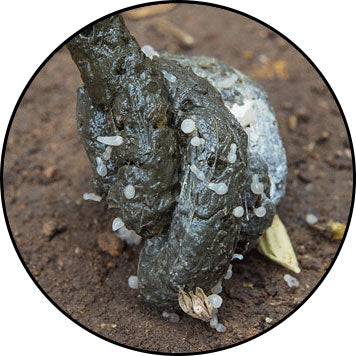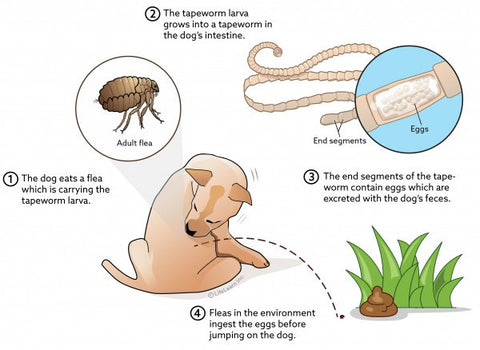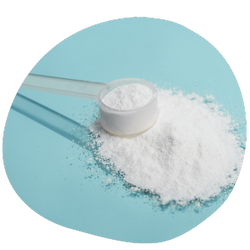No Products in the Cart
4 Reasons to Treat Your Dog Against Fleas: Vet Advice

Did you know that fleas are the most common parasites found in dogs and cats?
Veterinarians frequently raise awareness against them because they can harm your pet and family, and they are tough to exterminate!
When vets talk about fleas, we generally refer to Ctenocephalides felis, also known as Cat flea. But do not be fooled by its name because this is the main subspecies we find on cats and dogs. Interestingly enough, dogs have their flea called Ctenocephalides canis, the dog flea, but it is less common in dogs and never found in cats.
When chatting with your veterinarian or your veterinarian team of professionals, you probably heard that you need to treat all your pets year-round for fleas. If they strongly recommend this approach, it's because of four main reasons you will want to know!
Also Read: Is Your Dog Prone to Elbow Dysplasia? Symptoms and Best Treatments
1. Fleas might bite you or your family
Insect bites are no fun, and itchy flea bites are no exception! More terrifying is that if you are the victim of a flea bite, they've taken over your living space.
Furthermore, you can be assured that your pet is suffering from flea bites! Indeed, adult fleas you can see represent only 5% of the total population of fleas present in your home. This bite will be the first of many.
More concerning than itchy bites are the diseases that flea can transmit to your pet and the rest of your family.

2. Fleas might give diseases to your family
We just eluded that Ctenocephalides felis, the common flea, can be host to parasites and bacterias. Fleas can be the vector of Bartonella henselae, the bacteria responsible for cat scratch disease. They can transmit this bacteria from one cat to another and directly to humans. Unfortunately, cats are primarily asymptomatic, so you won't know they have it.
However, the cat-scratch disease can provoke symptoms like a fever in healthy people. This disease can affect the brain, eyes, and heart in children or people with poor immune systems and should be considered a serious condition. You can learn more on the Center for Disease Control and Prevention (CDC) website. The control of the flea population is one of the CDC's recommendations to limit cat scratch disease risks.
Fleas can also transmit other bacterias that lead to diseases such as Rickettsias (R. typhi or R. felis). Once again, it might be called Ricketssia felis but a recent study has demonstrated that dogs are a natural reservoir for this bacteria.
Even though they are mostly asymptomatic in cats and dogs, for humans, these diseases can lead to symptoms similar to those of cat scratch disease, including fever, headaches, and muscle pain (myalgia). In addition, they can go as far as to cause neurological complications. Finally, they can transmit parasites to your pet.
Also Read: Dog Hip dysplasia: Symptoms, Treatments and Solutions
3. Fleas might give worms
You might have already seen small "rice grains" in your dog or cat's feces (see this not so sexy photo below). These are not undigested rice but a specific tapeworm called Dipylidium caninum. You might be surprised to learn that this tapeworm is mainly transmitted to dogs and cats when they eat fleas.

But don't be because flea bites are itchy. So, while licking their fur and skin, dogs and cats will inadvertently swallow fleas that might carry this Dipylidium. Once inside the pet's belly, the Dipylidium larva will grow, accomplish its reproductive cycle and release segments of its body in the feces: these are the rice grain-looking structures you can see.
When pets have Dipylidium caninum, you can spot them doing the famous "funny" symptom you might have seen on social media: the scooting and bottom dragging on the floor. If you see your pet doing that, you should take them immediately to the vet to get treated for tapeworm. (be careful, this symptom might have other causes, this is why you need to take your dog to the vets)

4. Your pet might be allergic to fleas
When a flea bites a dog or a cat, it injects saliva that contains blood-thinning substances made of proteins. Some dogs and cats are more sensitive to flea saliva's proteins. In this case, even a single bite can lead to a severe allergic reaction called Flea Allergy Dermatitis (FAD).
You will see your pet in so much agony that it will break your heart. Indeed allergic animals will scratch, lick and chew intensively the itchy and inflamed areas making their skin red, swollen, and hairless.
Also Read: What is Dog Bloat or GDV? Symptoms, Causes, Costs, and Photos
Learn more about this condition in our dedicated article: Everything you should know about Flea Allergy Dermatitis (FAD) in dogs and cats.
We hope you now agree that it's essential to treat all your pets year-round to avoid running into these four very unpleasant situations!















Leave a comment